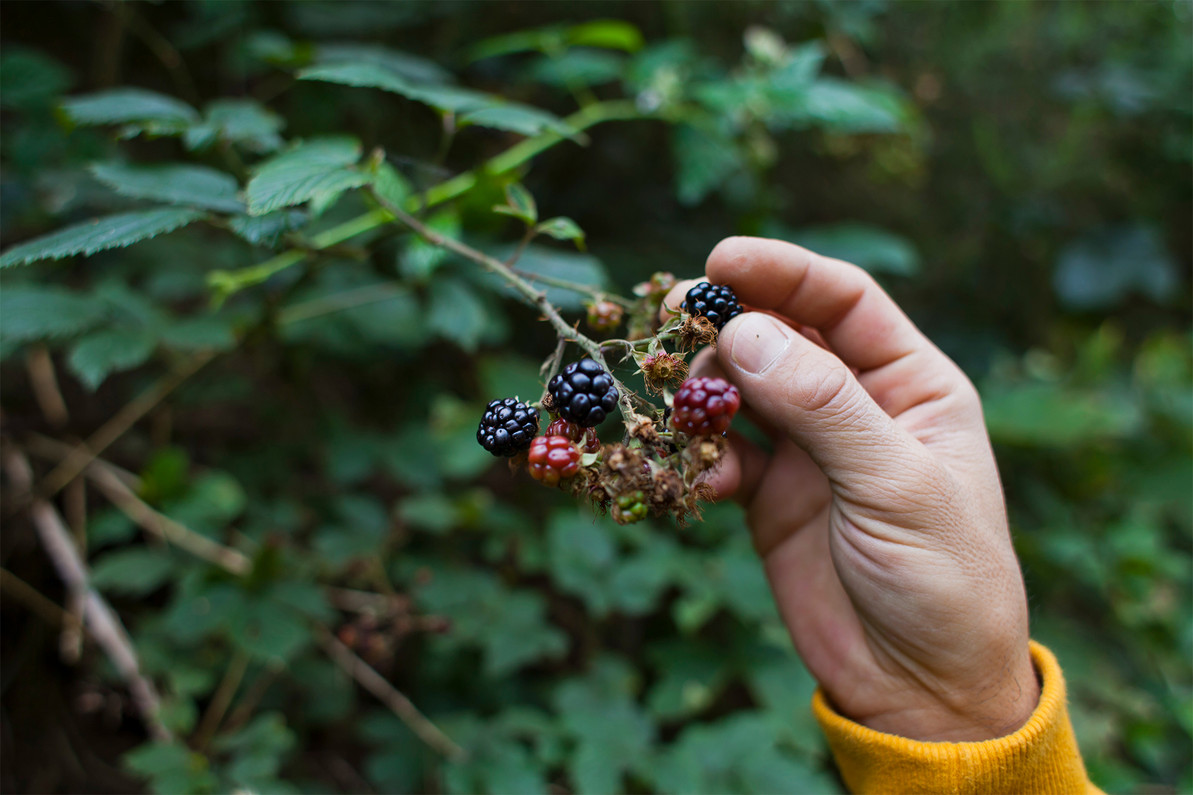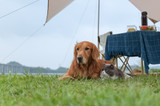Fall Foraging
Many families, including mine, have memories of searching through forests and fields in search of edibles. Mushrooms are always a popular forage food, whether it is those rare and pricey morels in the spring or other species of mushrooms in the fall. For many people who have adopted the RV lifestyle, outdoor adventures can include looking for tasty treats in the wild lands they encounter on their journey.
In some sense it is a nod back to the roots of human existence – finding sustenance from our environment. Our tribal ancestors needed to know the ins and outs of what to gather and what to leave alone. This is still valuable knowledge today. Before harvesting anything out in the wild, make sure it is legal to do so and that it is safe to consume.
Simply put, foraging is defined as searching for wild food resources. Animals forage food and their human neighbors also partake in this ancestral practiced tradition. Most of the time, animals will be foraging for the same edible plants, berries and fungi that humans do. This prompts wildlife agency officials to often limit the quantities of edibles humans can remove from protected areas.
Laws regarding foraging on state owned lands vary by the state. Permits are often required to forage on federal lands and anyone who is seeking edibles on private property should always obtain owner’s permission. There are ethics surrounding the practice of foraging and adhering to the rules and regulations and standard practices ensure everyone will have access to this outdoor activity.
Always check with federal forest service offices and the states’ equivalents for their foraging regulations. What people can collect and gather differs in geographic areas and seasons. Seeds from plants, leaves, stems or roots is not allowed. This restriction includes plants gathered for medicinal reasons as well, although that is a category that may not be applied equally across all places.
The taking of endangered or threatened species is also prohibited. In Wisconsin for example, the taking of wild rice is one of the species that is restricted. Harvesting ginseng is also heavily restricted in states where it grows in the wild and if allowed, quantities collected are strictly enforced. Harvesting for personal use as opposed to harvesting to sell carry different restrictions. Most personal use foraging is allowed without a permit but be sure to check with park rangers to be sure.
There are many different plants, nuts and fungi that are popular as well as plentiful with foragers. Some of these include fruits such as apples, plums, pears, blueberries, raspberries, blackberries, juneberries and strawberries. Nut varieties found and enjoyed include walnuts, hickory nuts, acorns and other similar nuts from trees and shrubs. Wild mushrooms found by foragers are morel, oyster, lobster, chanterelle, giant puffball and hen of the woods. Wild asparagus and water cress are also on the list of possible foods available for foraging.
If you are new to foraging, experts suggest that the focus should be on one type of food, such as a specific type of mushroom, the collection of a specific variety of nut, or the taking of a certain type of berry. Pick something that you already enjoy and find its wild counterpart. This ensures that the edibles you are collecting are safe to consume and the risk of picking a species that looks very similar but is poisonous is lower.
Foraging simply for the pleasure of it is one of the activities that has drawn interest during the COVID-19 quarantines. It does not require the participation of groups of people and can easily be a solo pastime. It is also a family friendly activity that instills an appreciation for and passion for the environment.
Be familiar with some of the ethics involved in foraging. Just like any activity there are some dos and don’ts when it comes to collecting edibles from the land.
- Never take more than you need.
- Be respectful of the lifestyles of what you harvest to ensure that species’ sustainability.
- Do not damage the plant or tree just to get to the edible you want.
- Learn the proper ways to harvest edibles in the wild.
Foraging is a way to reconnect with nature and tap into the historic root of humankind’s ancestors. Although it takes a little training and study to be able to forage safely, it is well worth the time and effort. After all, it is just another reason to head to the woods and enjoy the bounties of nature.
Recent Posts
-
How to Keep Your Pets Safe While Camping
RVing and camping are a great getaway from the hustle and bustle of work and the city and the day-to …Jul 2nd 2024 -
Why Replace Your RV Furniture?
You may wonder when is the best time to replace your RV furniture. There is no one right answer to t …May 20th 2024 -
Can You Put Regular Furniture in an RV?
Many new and old RV owners ask themselves this question when they feel the need to update th …Apr 25th 2024 -
4 Tips for Securing RV Furniture While Traveling | RecPro
How To Secure RV Furniture There are few things that beat going out on an adventure with an RV …Apr 25th 2024 -
How To Keep RV Furniture From Peeling
Peeling RV Furniture | Why it Peels and How to Stop it Your RV furniture is a point of pride on yo …Apr 25th 2024 -
Turning up the Heat With an RV Fireplace
There’s an unlimited number of cool and exciting features you could add to your recreational vehicle …Apr 25th 2024







